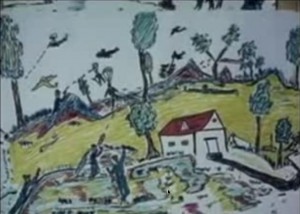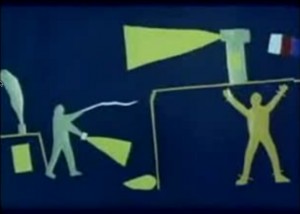 This is the name of an online multi-media project that I made in collaboration with design intellectuals Craig Dietrich and Erik Loyer that went live today. The project looks at how to decolonize visuality; or, to put it affirmatively, how to visualize a society after colonialism. It uses the central example of Algeria and its decolonial struggle from 1954 to the Arab Spring. Here I want to talk a bit about how this project both laid the ground for my involvement with the Occupy movement and for the shape that Occupy 2012 has taken since. While this is a tad narcissistic, this is a blog a) and b) there might be relevance for other people thinking of taking on similar work.
This is the name of an online multi-media project that I made in collaboration with design intellectuals Craig Dietrich and Erik Loyer that went live today. The project looks at how to decolonize visuality; or, to put it affirmatively, how to visualize a society after colonialism. It uses the central example of Algeria and its decolonial struggle from 1954 to the Arab Spring. Here I want to talk a bit about how this project both laid the ground for my involvement with the Occupy movement and for the shape that Occupy 2012 has taken since. While this is a tad narcissistic, this is a blog a) and b) there might be relevance for other people thinking of taking on similar work.
In this project, “Algeria” is also a metaphor for the contested border between North and South in the formation of financial globalization and thus exists in many places other than the geographic space known in English as Algeria, in French as Alger and in Arabic as al-Djazair. In the book, I wove a tight narrative that tried to hold these pieces together across about forty pages. When I came to make this section into a digital project, I thought it would be a simple task: cut the text into pieces and add the films, photographs and other images.
At the first meeting I had in LA with the Alliance for Networking Visual Culture, which designed the software used for “We Are All Children of Algeria, they asked me a question that threw all that out of the window: how did I want to design the project? What was the concept? I didn’t think I had one but I found myself saying that it was about a demonstration. Or what is called a march in the US. This was, it turned out, what you might call a retrospective realization about where the work was actually going.
So I took the title from chants used at French anti-fascist marches that I had been on as a student in Paris back in the 1980s. As part of solidarity, crowds chanted “Nous sommes tous enfants d’immigrés” or “We are all children of immigrants.” French anti-fascism was not notional: then and now the National Front were racist and violent. Their targets were “Algerians,” meaning any person who is from or descended from North Africa–or in any way sympathetic to them.
When I began the project in the summer and autumn of 2010, I felt that I needed to justify the very idea of marching, or simply putting bodies into public space, as not being totally outmoded. Now of course it seems that this tactic, far from being redundant, has been key first to the extraordinary movements in North Africa and the Middle East and now to Occupy. So that in and of itself seemed to prepare me for Occupy and to be part of the movement.
Although I got involved fairly early, I at first felt that I did not want to make academic work about Occupy at all. When I decided that as part of a strategy to develop my own sense of commitment and understanding that I did want to write about it, I took the performative or artistic model of the durational project, rather than just say “I’m writing [yet another] book about Occupy.” I wouldn’t have done that before thinking how to make a digital project.
It’s also enabled me to do something to the way that I write, which, when it works, seems now to be able to speak to both activists and academics. Again, I say this not to claim some spurious status for myself but to encourage other, younger artists, writers, performers and intellectuals to embrace the challenges of such cross-platform projects. As this way of thinking and imagining is so much more familiar to you, you will do far more exciting and ground-breaking things than I can conceive.
There’s so much lazy reluctance in academia to be involved with either the intellectual or political forms of the present moment. I can count the other (full-time tenure track) faculty that I see at Occupy events or meetings where they are not speaking–well, let’s just say easily. On the other hand, the design and programming group involved in ANVC are all in different ways productive intellectuals and engaged activists. Enough said.


